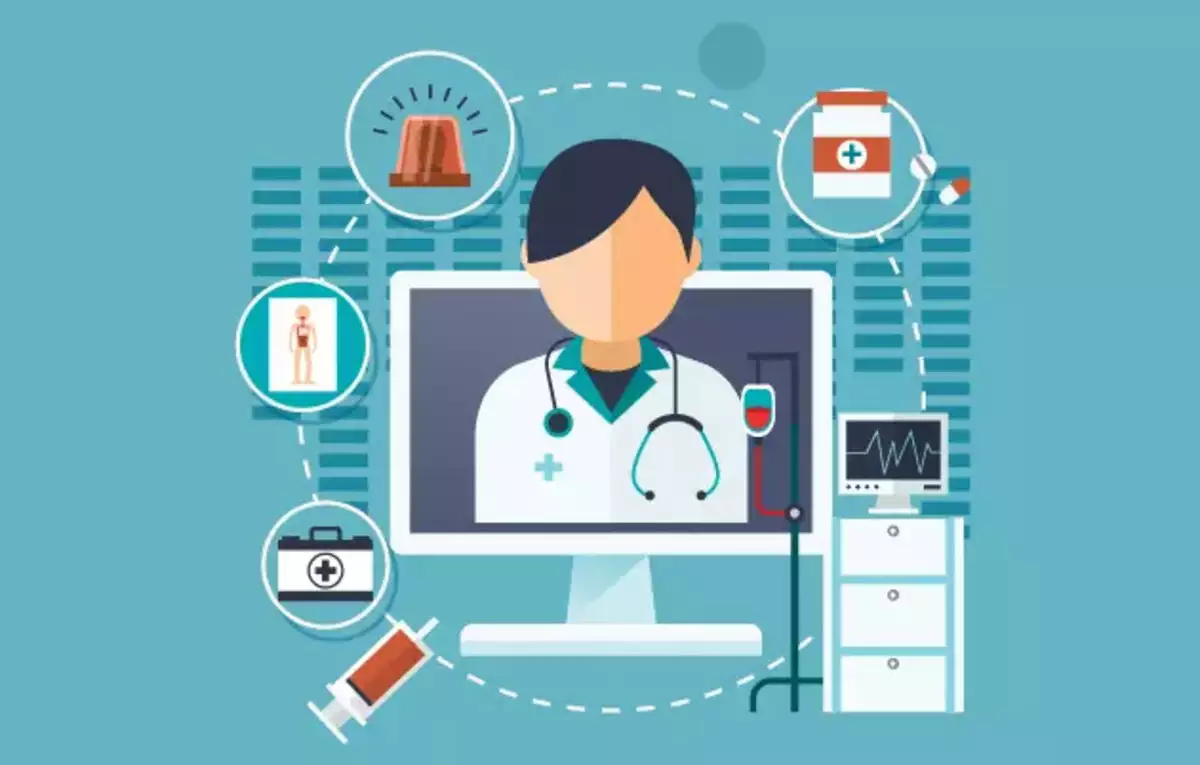Telemedicine has emerged as a powerful tool to bridge the significant healthcare gaps in India, especially given its vast and diverse population of over 1.35 billion people. As the country faces challenges such as an inadequate doctor-patient ratio, healthcare disparities between urban and rural regions, and skyrocketing healthcare costs, telemedicine offers a solution that can reach the most underserved areas efficiently. The COVID-19 pandemic has further highlighted its importance, as it became an essential service for ensuring continued access to medical care while maintaining safety protocols.
In this blog, we explore the trends, business models, opportunities, challenges, and regulatory framework that are shaping the telemedicine landscape in India.
Telemedicine: Definition and Importance in India
Telemedicine refers to the use of information and communication technologies (ICT) to provide healthcare services remotely, which includes consultations, diagnosis, treatment, and prevention. The World Health Organization (WHO) defines telemedicine as the delivery of healthcare services where distance is a critical factor, leveraging technology to exchange health information for diagnosis, treatment, and prevention. In India, the government adopted this definition to address the disparities in healthcare access, particularly in rural areas where the doctor-to-patient ratio is alarmingly low. With India’s ratio standing at 1:1457 (far from the WHO recommended 1:1000), telemedicine becomes a critical tool to ensure that even the most remote populations can access healthcare.
Business Models in Telemedicine
Telemedicine in India is evolving rapidly, driven by various business models that are making healthcare more accessible:
- Consultation Over Platforms: Patients can connect with healthcare practitioners via mobile apps or websites, facilitating remote consultations. This model includes platforms like Tata 1mg, Netmeds, and PharmEasy, which offer e-consultations, diagnostic recommendations, and prescriptions, providing healthcare at the fingertips of users.
- Messaging-Based Consultations: In this model, informal consultations are conducted through messaging apps. While this offers convenience, it often lacks the healthcare-specific tools needed for comprehensive care. However, it serves as a quick option for basic queries.
- Physician-to-Physician Consultations: This model involves specialist consultations via telemedicine platforms, where primary care physicians connect with experts remotely for second opinions, improving diagnosis accuracy and care plans.
- Cross-Border Consultations: The rise of global collaborations in telemedicine has led to cross-border consultations. This includes both Indian physicians offering services to patients abroad and international medical professionals providing expertise in India, expanding the scope of medical care globally.
Regulatory Framework and Policies
India’s telemedicine framework is governed by several acts and guidelines designed to ensure the safety, privacy, and efficacy of remote healthcare:
- Telemedicine Practice Guidelines (TPG): Released in 2020, the TPG provides a comprehensive legal framework for telemedicine services, covering everything from consultations to patient consent and prescriptions. These guidelines ensure that telemedicine operates ethically and within the bounds of the law.
- National Digital Health Blueprint (NDHB): The NDHB, under the Ayushman Bharat Digital Mission (ABDM), is aimed at creating a unified digital health ecosystem. This includes the issuance of unique Health IDs for every Indian citizen, allowing easier access to electronic health records and better healthcare data management.
- Data Protection Regulations: With growing concerns over patient privacy, the Digital Personal Data Protection Act (DPDPA) is being developed to safeguard sensitive health data in the digital environment. These regulatory measures ensure that patient data is stored securely and used ethically.
Advantages and Opportunities of Telemedicine
Telemedicine offers numerous advantages that benefit both healthcare providers and patients, making it a valuable tool in India’s healthcare system:
- Increased Accessibility: One of the key benefits of telemedicine is its ability to bridge the urban-rural divide. With a disproportionate concentration of healthcare facilities in cities, telemedicine allows rural populations to consult specialists in real-time without traveling long distances.
- Scalability: The adoption of digital health systems like ABDM has the potential to create a unified health data ecosystem, making it easier for healthcare providers to manage patient information, prescriptions, and health records across India.
- Economic Growth: Telemedicine opens up economic opportunities, especially in digital healthcare platforms, attracting investments from both domestic and international players. This has the potential to grow the sector while addressing India’s healthcare needs.
Challenges in Telemedicine Implementation
Despite its growth, telemedicine in India faces several challenges that need to be addressed for its sustainable expansion:
- Data Security Concerns: The handling of sensitive patient data is one of the foremost challenges in telemedicine. Robust security protocols must be in place to prevent data breaches and ensure patient confidentiality.
- Standardization of Health Records: The lack of standardized Electronic Health Records (EHR) makes it difficult to ensure seamless continuity of care, as patient data is often fragmented across various platforms. Standardization is crucial to facilitate smooth data sharing and interoperability.
- Professional Conduct: Instances of inappropriate prescriptions and patient privacy violations highlight the need for stricter ethical guidelines in telemedicine. Ensuring that healthcare professionals adhere to established standards is crucial for patient trust and safety.
- Infrastructure Gaps: Poor infrastructure, including unreliable internet access and frequent power outages in rural areas, remains a barrier to widespread telemedicine adoption. The availability of consistent broadband internet is a critical requirement for telemedicine to function effectively.
Technological Trends Driving Telemedicine in India
Advancements in technology are key to the rapid growth of telemedicine in India. These technologies are helping improve the quality and accessibility of healthcare services:
- AI and Machine Learning: Companies are increasingly using AI to predict patient needs, analyze symptoms, and connect patients with the right healthcare professionals. These technologies are also enhancing diagnostic accuracy.
- Blockchain: Blockchain technology is being explored for secure data management, ensuring that patient information remains intact, accessible only to authorized individuals, and immune to cyber threats.
- Cloud Computing and Big Data: These technologies enable healthcare providers to store and process vast amounts of patient data in real-time, facilitating faster decision-making and enhancing the efficiency of healthcare delivery.
The Role of the Government and Future Directions
The Indian government plays a crucial role in advancing telemedicine through initiatives like eSanjeevani, which has made significant strides in offering telemedicine services to millions, especially during the COVID-19 crisis. Programs like Ayushman Bharat aim to ensure equitable access to healthcare through digital platforms, making healthcare more accessible to low-income populations.
Looking forward, there are several areas where telemedicine in India can evolve:
- Expansion of Regulations: The expansion of Telemedicine Practice Guidelines to include practices like tele-radiology and tele-nursing will allow telemedicine to cater to a broader spectrum of healthcare services.
- Increased Public Awareness: Campaigns aimed at educating citizens about the availability and benefits of telemedicine will encourage adoption.
- AI and IoT Integration: Leveraging AI and IoT in healthcare delivery will further improve diagnostic capabilities, personalize treatments, and ensure better healthcare outcomes.
A Bright Future for Telemedicine in India
Telemedicine in India has proven to be a powerful tool in addressing the country’s healthcare challenges. It offers a promising solution to bridge the gaps between urban and rural healthcare delivery, increases accessibility, and reduces costs. The rapid adoption of technology, government support, and the increasing demand for convenient healthcare options ensure that telemedicine will continue to grow.
Despite challenges such as data privacy concerns and infrastructure gaps, the future of telemedicine in India looks promising. With continued advancements in technology, evolving regulations, and widespread adoption, telemedicine is set to become a cornerstone of India’s healthcare system, driving innovation and improving healthcare delivery across the nation.




